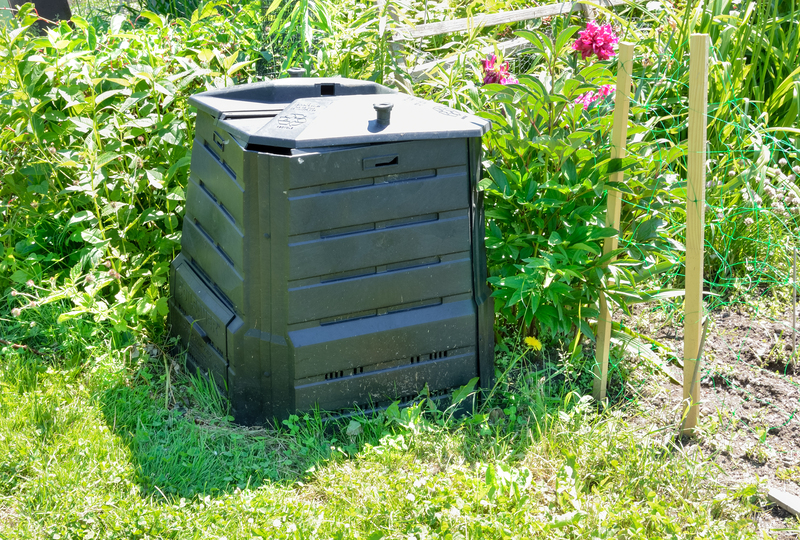Easy Steps for Proper PPE Waste Disposal Management
The global health crisis has dramatically increased the use of personal protective equipment (PPE) such as face masks, gloves, and gowns across a variety of sectors. However, the surge in PPE usage has also brought with it a new set of environmental challenges--notably, the proper disposal of PPE waste. Inappropriate disposal can result in environmental pollution, health hazards, and the spread of infectious diseases. Therefore, it's crucial to implement proper PPE waste disposal management for individuals, businesses, and organizations alike.

What Is PPE Waste?
PPE waste encompasses all used personal protective equipment that is no longer safe or clean for reuse. This includes but is not limited to:
- Face masks and respirators
- Gloves (latex, nitrile, vinyl, etc.)
- Protective gowns and aprons
- Face shields and safety glasses
- Boot and shoe covers
- Head covers and hair nets
Since PPE is typically designed for single or limited use, it's essential to dispose of it safely and properly to minimize environmental and public health risks.
Why Proper PPE Waste Disposal Management Matters
Proper PPE waste disposal is vital for several reasons:
- Public Health: Incorrect disposal of contaminated PPE can lead to virus transmission and other health hazards.
- Environmental Protection: Non-biodegradable PPE contributes to landfill accumulation and pollutes water bodies, harming wildlife and ecosystems.
- Workplace Safety: In healthcare and industrial settings, lingering PPE waste can endanger employees and visitors.
- Regulatory Compliance: Many regions require businesses and healthcare providers to comply with specific PPE waste management laws and standards.
Easy Steps for Proper PPE Waste Disposal Management
If you're seeking effective strategies for managing PPE waste, consider these simple yet powerful steps:
1. Segregate PPE Waste at the Source
The first and most critical step in proper PPE waste management is segregating waste as soon as it is generated. Designate special waste bins for used PPE--ideally, these should be:
- Clearly labeled as PPE Waste Only
- Colored in accordance with local waste management color-coding (often red or yellow for infectious waste)
- Located at points of PPE usage, e.g., entrances, exits, near sanitization stations
- Equipped with foot-operated lids to minimize hand contact
2. Use Double Bagging for PPE Collection
To contain any leakage and prevent the spread of pathogens, it's recommended to use the double bagging method:
- Place used PPE in a sturdy, leak-proof bag
- Seal the first bag securely, then place it inside a second bag
- Seal the outer bag and transfer it to the designated PPE disposal bin
3. Minimize Direct Contact
Staff assigned to collect and handle PPE waste should always wear appropriate PPE themselves--such as gloves, masks, and aprons--when handling waste. By minimizing direct contact with used PPE, the risk of contamination is drastically reduced.
4. Label and Store Waste Properly
All PPE waste should be clearly labeled and stored in a safe location until collection. Key points include:
- Using waterproof markers or pre-printed labels
- Ensuring storage areas are out of reach of unauthorized personnel, children, and animals
- Regularly disinfecting waste storage containers
5. Arrange Scheduled Collection by Certified Waste Handlers
Depending on the scale of your operation, partner with a licensed biomedical or hazardous waste disposal service. They will ensure:
- PPE waste is collected at regular intervals
- Transported in appropriate, labeled vehicles
- Treated and disposed of according to national and local regulations
In some regions, small quantities from households may be disposed of alongside general waste if local authorities don't provide special arrangements. However, always check with your local council for the most up-to-date guidance.
6. Consider Waste Treatment Methods
Different PPE materials require various waste treatment and disposal techniques. Common options include:
- Incineration--Effective for destroying infectious agents and reducing volume but must be monitored for emissions
- Autoclaving--Steam sterilization is ideal for plastic and fabric PPE, rendering them safe for landfill disposal
- Microwave or Chemical Disinfection--Further decontaminates PPE before disposal or recycling
- Landfilling--Only recommended after proper treatment
Your waste management provider will guide you in choosing the best method for your PPE waste type and volume.
7. Educate and Train Personnel
Regularly train employees on the importance and procedures of PPE waste disposal management. Key training areas include:
- Segregation and handling techniques
- Use of appropriate containers and labels
- Response to spills or accidental exposure
- Emergency contacts and first aid
*Education fosters a culture of safety and responsibility that extends beyond regulatory compliance.*
8. Promote Sustainable Alternatives Where Possible
Reducing the environmental burden of PPE waste disposal can also be achieved by:
- Choosing reusable PPE when applicable and safe
- Supporting recycling programs for non-contaminated PPE components (e.g., certain plastics)
- Working with manufacturers offering eco-friendly or biodegradable PPE
Responsible procurement minimizes future waste and supports a circular economy.
9. Maintain Comprehensive Documentation
Keep accurate records of PPE waste collection, treatment, and disposal. Documentation is essential for:
- Audit purposes and regulatory compliance
- Tracking waste volumes and identifying reduction opportunities
- Demonstrating corporate social responsibility efforts
10. Engage with Local Authorities and Regulations
Local regulations may change as new information about health and environmental impacts emerges. Stay informed by:
- Subscribing to updates from environmental and health authorities
- Attending community waste management forums
- Regularly reviewing workplace policies
Compliance not only prevents legal troubles but also sets a positive example for peers and the public.
Best Practices for PPE Waste Disposal at Home
While businesses and healthcare providers handle larger volumes of waste, individuals also play a vital role in safe and sustainable PPE waste management. Here are household guidelines:
- Never litter used PPE. Dispose of it in closed bins to prevent accidental contact.
- Do not flush PPE (masks, gloves, or wipes) down the toilet--this leads to plumbing issues and water pollution.
- If sick or caring for a patient, double-bag used PPE and dispose of it with household waste.
- Sanitize hands thoroughly before and after handling used or discarded PPE.
- Routinely clean waste bins to prevent microbial growth.
Responsible disposal starts at home and sets the foundation for community-wide safety.
Common Mistakes to Avoid in PPE Waste Disposal
Despite the growing awareness, errors in disposing of PPE are all too common. Here are some pitfalls:
- Mixing PPE with recyclable waste. Most single-use PPE is not recyclable via standard curbside programs.
- Leaving used PPE exposed. Improperly discarded masks and gloves can spread germs to passersby, animals, and sanitation workers.
- Using open or unsanitary bins. Always choose closed bins designed for hazardous waste.
- Neglecting appropriate labeling. Unmarked or mislabeled bins hinder safe collection and treatment.
- Failing to keep up with regulations. Waste management rules may update; non-compliance poses risks.
Frequently Asked Questions About PPE Waste Disposal Management
Can PPE waste be recycled?
While some components of PPE (like certain plastics) are technically recyclable, once used, these items are usually contaminated and must be disposed of as regular or medical waste. Some innovative recycling programs exist, mainly for non-infectious or unused PPE, but they are not yet widespread.
How do healthcare facilities handle large volumes of PPE waste?
Hospitals and clinics follow strict protocols. They use color-coded disposal bins, double-bagging, and regular collection by certified medical waste handlers. Most PPE waste is incinerated or autoclaved before final disposal.
Is burning PPE waste at home safe?
Absolutely not. Home incineration of PPE can release toxins and is illegal in many areas. Always follow local guidelines--use municipal collection services or certified waste handlers.
What should I do if there's a PPE spill?
Wear gloves and a mask, use a dustpan or tongs to pick up the waste, double-bag it, and cleanse the area with a disinfectant. Dispose of cleanup materials as PPE waste and wash your hands thoroughly.

Innovations and Future of PPE Waste Management
As the world adapts to increased plastic PPE waste, several innovations are emerging:
- Biodegradable PPE: Manufacturers are developing masks and gloves that break down faster in landfill environments.
- Specialized recycling programs: Some companies and non-profits collect, disinfect, and recycle limited types of used PPE, converting them into construction materials.
- Reusable PPE: In non-high-risk environments, washable PPE is becoming more popular, reducing overall waste volumes.
Adopting new technology and policy reforms will further streamline efficient PPE waste management while reducing harm to the environment.
Conclusion: Make PPE Waste Disposal Management a Habit
Proper PPE waste disposal management is not just a regulatory requirement--it's a critical part of public health, environmental stewardship, and community responsibility. By understanding the nature of PPE waste and following these easy, actionable steps, all stakeholders--from households to large organizations--can ensure waste is handled efficiently, safely, and sustainably.
Together, we can minimize the impact of PPE waste and build a cleaner, healthier future for everyone.